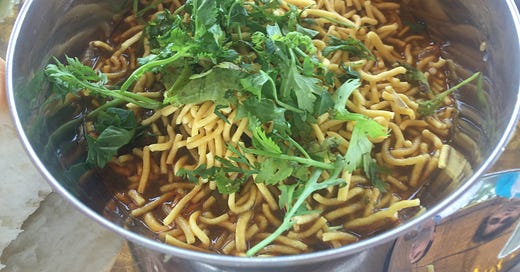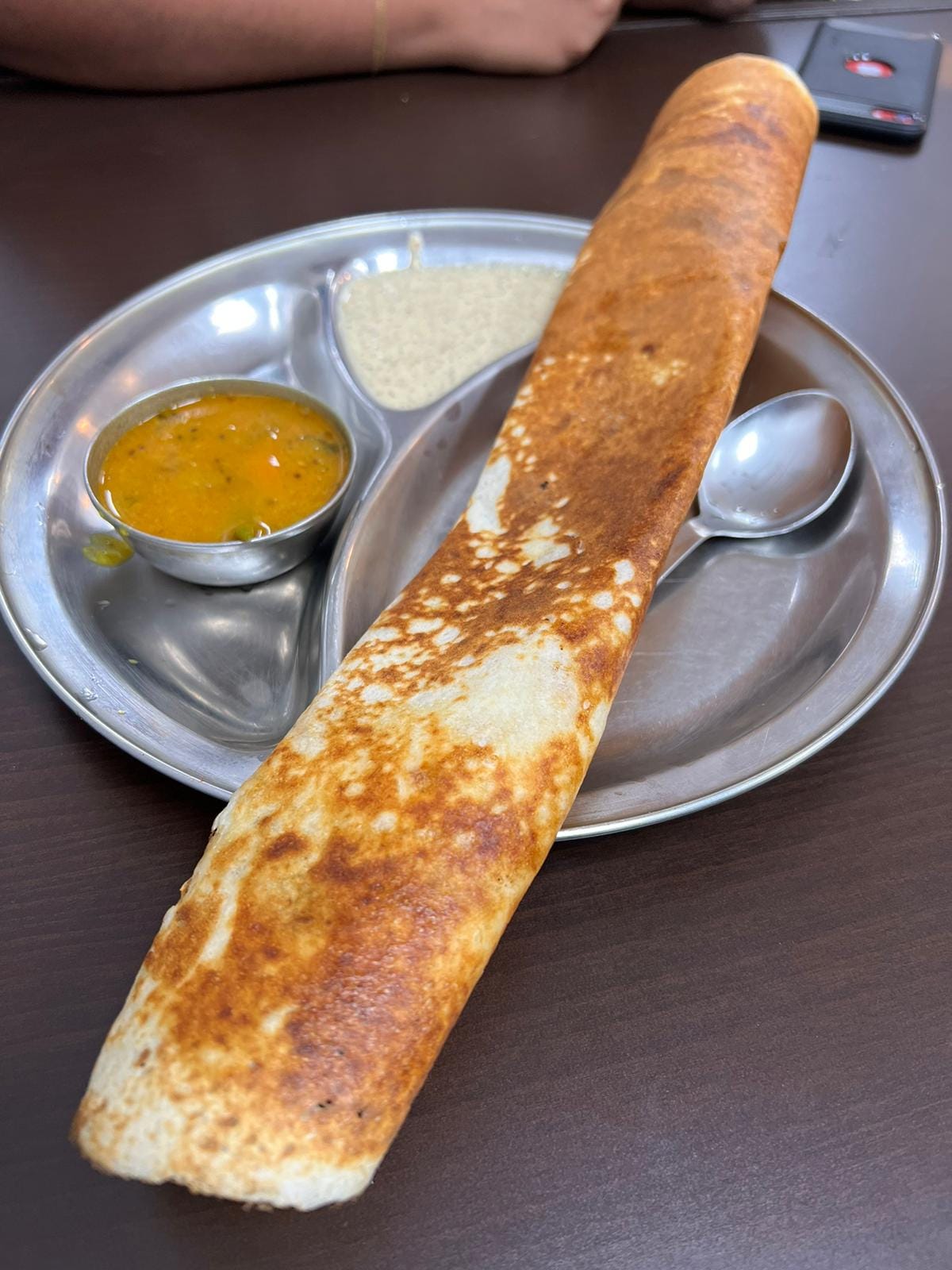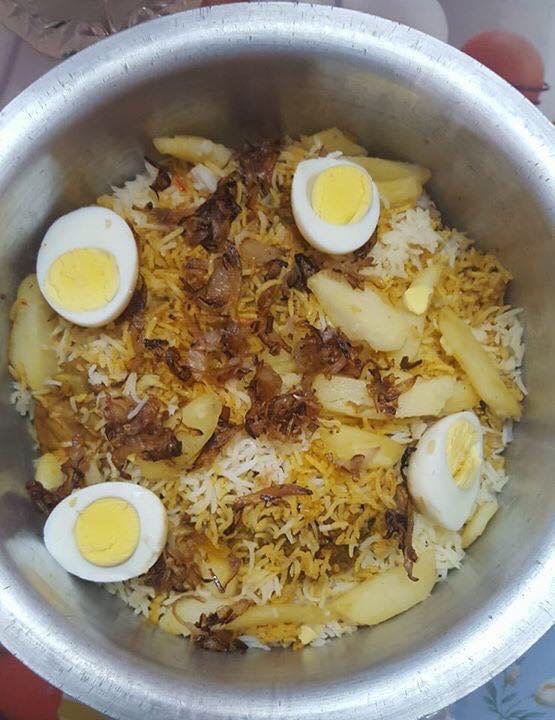We don’t need another ‘Indian’ restaurant
In India, the cuisine changes every 100km. So why does pretty much every Indian restaurant in Aotearoa serve the same thing?
I love Indian restaurants. In India.
When I lived there, every month I’d set off with my mother-in-law to indulge in a Gujarati thali, where they serve you up to six delectable vegetable preparations – always seasonal. During Ramadan, I’d make my annual pilgrimage to Mumbai’s Bohri Mohalla, where street vendors fan spicy skewers of lamb seekh kebab on coal grills. Living close to South Indian food mecca Matunga meant I often started my day with a podi ghee roast dosa. And whenever someone in the family craved fish, we’d head to our local Maharashtrian lunch home for some fish gassi and tisrya (clam) masala.
But here in New Zealand? I hardly ever eat Indian food outside my home.
Because no matter how many different Indian restaurants I visit, it feels like I’m eating at the same one.
The menu never changes, and everything tastes almost the same.
We were in Taupō recently, and by the fourth day, my children were craving dahl and rice. We had two joints to choose from, but really there was no choosing involved. The menus could have been photocopied – more than 20 similar dishes, including butter chicken (of course), mango chicken, madras chicken and lamb saagwala.
You could say the same thing happens at a Korean restaurant, at a Mexican taqueria, or at a pizzeria. And no restaurant serving an average of 40 dishes can hope to showcase the food an entire country eats.
But with other cuisines, my hope is that if we combined the menus of all the Korean joints or Italian nooks in Aotearoa, we would have a reasonable representation of the country’s food.
Not with Indian food. As chef Srimoyee Chakraborty of London’s Calcutta Street restaurant once said, “I can add all of the Indian restaurant menus in England together, and they cover about 2% of what India really offers.”
It’s partly India’s fault
The country is vast. There are more than 2,000 ethnic groups, each with its own unique cuisine. Visit India, and you’ll realise that the cuisine changes every 100km.
Rajasthan is mostly an arid state, which means their food features wheat and millets instead of rice. Meanwhile, in coastal Goa, fish and curry rule the kitchen, most dishes incorporate coconut, and there’s a heavy Portuguese influence. Across the country in northeast Meghalaya, the food is heavily influenced by its hunting-gathering traditions; doh-neiiong (smoked pork with bamboo shoots) is a popular dish. And, the east coast Bengalis love their meat and potatoes so much there’s even a song about their kosha mangsho.
There is also community variance. Like the Parsis who enjoy eating at least two kinds of meat in a single meal, or the Pathare Prabhu whose cuisine is influenced by the vegetarian Gujarati community, yet their signature dish is a prawn pie!
So really, India is a country of countries. The cultural equivalent of Europe. It’s impossible to cram all this diversity into one “Indian” restaurant.
Internationally, the definition of Indian food is broadening
People who know me know that I intensely dislike radioactive orange Kiwi butter chicken.
But UK-based food writer
says murgh makhani (butter chicken) will likely always remain the entry point for people’s Indian food journey. “Even in India, north-west frontier cuisine has always been a go-to for special occasions. Rich and comforting, dishes like dahl makhani, sikandari raan (slow-roasted lamb leg) and biryani are popular at restaurants because they taste good and people are familiar with them.”But curry house popularity aside, Londoners are moving away from stereotypical ideas of Indian food and embracing its full diversity. The city now has Chourangi, which specialises in food from Kolkata; Trishna, which provides a taste of coastal cooking; and Gunpowder, where there’s no naan on the menu.
Closer to home in Australia, the regional Indian food scene is starting to emerge too, whether that’s Dhakshin in Sydney which cooks up dishes from regions like Tanjore, Udupi and Mangalore, or Melbourne’s Toddy Shop, where home-style Keralan cooking is on display.
Migration patterns have a lot to do with why the UK has a much greater awareness of Indian food than New Zealand does, says Chand Sahrawat, director at Cassia, Kol, Sid at the French Cafe and Cassia. People travel with their food traditions, and Indians have been migrating to the UK for over two centuries. In contrast, Indian migration to New Zealand has mostly occurred over the last 50 years, making the industry here more nascent.
Regional Indian is available in Aotearoa, too – but we need to hunt for it
I’d be lying if I said there’s no regional Indian cuisine to be found in Aotearoa. “At Cassia, we consciously decided to not have butter chicken on the menu,” says Sahrawat. “Will we find a Maharashtrian misal pav at an Indian restaurant? Likely, no. But we have incorporated some regional cuisines like Malabar and Chettinad.”
There’s also Mumbai’s prawn koliwada and Parsi sali boti at Mumbaiwala in Ponsonby. The Kerala mutton pepper fry at VT Station in Newmarket tastes fabulous too. And no one does justice to Mumbai’s train station staples, vada pav and bread pakora, like the Mumbai Vada Pav food truck.
But where can we find Lucknowi haleem, Bengali macher jhol, Bihari litti chokha and the decadent Bohri thaal? I especially feel for people living outside the Indian hubs of Auckland and Christchurch, where finding even decent chaat dishes like dahi puri and pani puri is akin to finding gold.
“The demand for regional Indian food in the UK has grown after decades of experimentation by restaurants and a sustained push by food writers in the media as well as cookbook authors,” says
as she coaxes me off my please-no-more-butter-chicken soapbox. “The pattern I’ve seen is that diners first experience Indian food at a curry house, then demand elevated, more authentic versions of those dishes and finally, they are ready to experience India’s regional nuances. It’s a journey.”
We all have a role to play when it comes to shifting the dial
My husband comes back from every farmer’s market lamenting why we don’t have a butter chicken paste as part of our product range at Dolly Mumma. We’d make so much more money.
I’ve compromised and introduced a tandoori paste, but I keep dreaming of a pop-up restaurant where I can serve a bowl of my prawn curry followed by some patra ni machchi – fish coated in a minty green chutney and steamed in banana leaves. Endlessly feeding everyone the food I love is the only way I know how to shift the dial.
That’s what Sammy Akuthota did when he opened Auckland’s popular Satya Chai Lounge after practically growing up at his parents’ restaurant, Satya. “I didn’t want another restaurant that did curries. I wanted to serve the food you’d find at your local beer bar because that’s where I enjoy hanging out.”
“We’ve come a long way. When my parents started Satya in 1999, Kiwis found the concept of sharing food wild. Fast forward to today, where you’ll find Kiwis from all communities chilling on our crates sharing snack plates and cocktails like you would at a dhaba in India. We’re definitely ready to move past the curry, rice, naan narrative but it can’t just be a basic mum-and-pop operation where the taste changes if Dad’s a bit upset today. Our customers want to go on a journey not just with the food but also with the ambience, the hospitality, and the overall experience.”
Would you like to try eating some Gujarati khichdi or Parsi dhansak in New Zealand some time soon?
You can help shift the dial by ordering something you don’t know or ditching the salt and vinegar chips to try some Indian snacks instead. If you’re in Auckland, drive to Sandringham Road and visit one of the smaller joints teeming with Indians – Eggs & More is great for chaat – or join me on an Indian food walk.
Who knows, maybe one day, my dream will come true. A mainstream restaurant that showcases traditional Indian dishes on its menu and keeps changing them! A different taste of India, every time you visit.
Thank you to The Spinoff where this article was first published
What’s the most unusual Indian dish you’ve ordered at an Indian restaurant?
Do you have a favourite Indian dish you’d like to see more of?
Should I just leave butter chicken alone (unlikely but you’re welcome to make a case for it :) )








I've just discovered you here Perzen. What an awesome Substack. You offer so much. I checked out your Dolly Mumma website too - looks like a great product.
Yes, you must open your own restaurant! May your dreams come true. 😊
You really need to check out Tandoori Heritage next time you're in Wellington. Dhansak is on their menu.